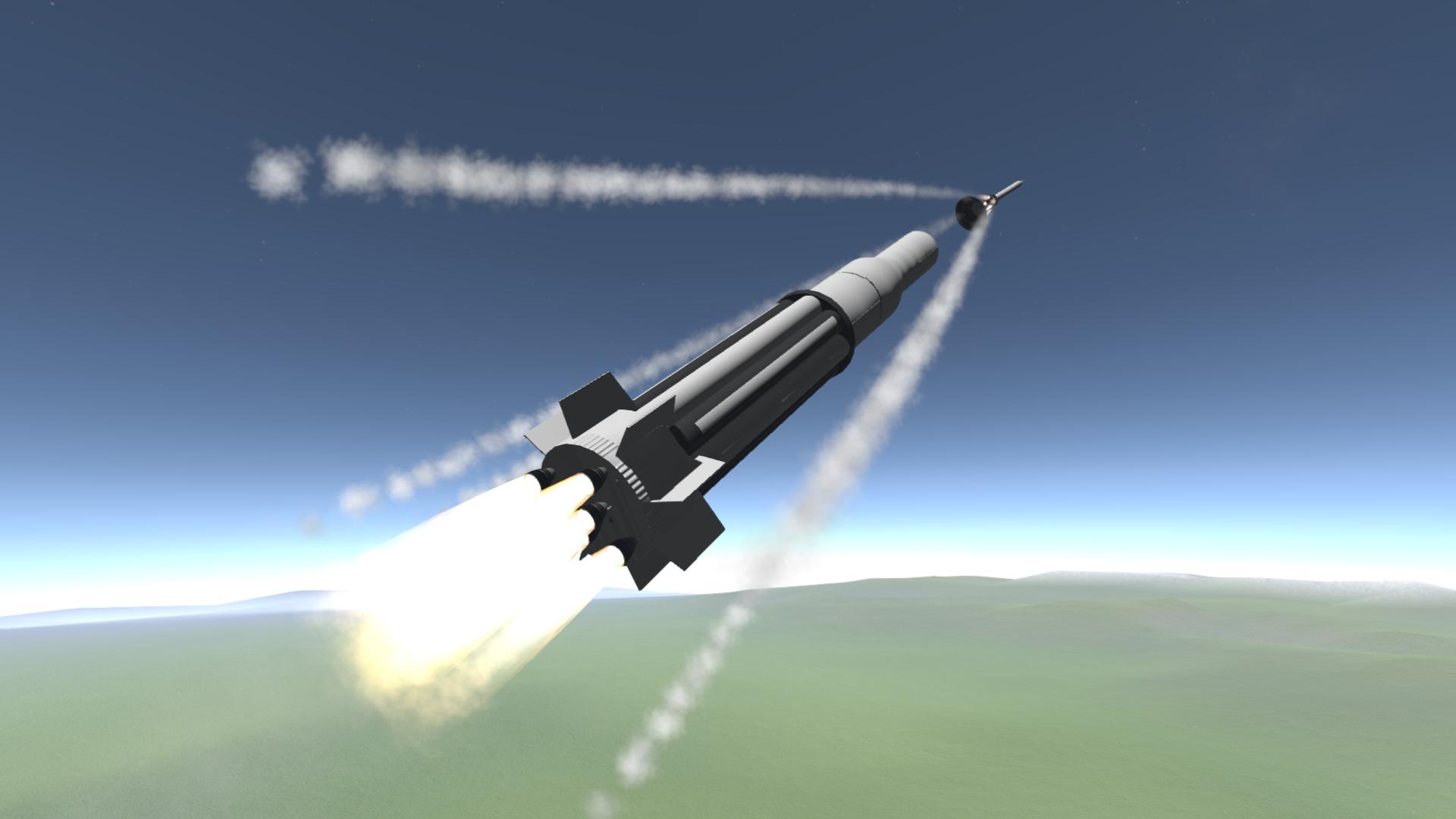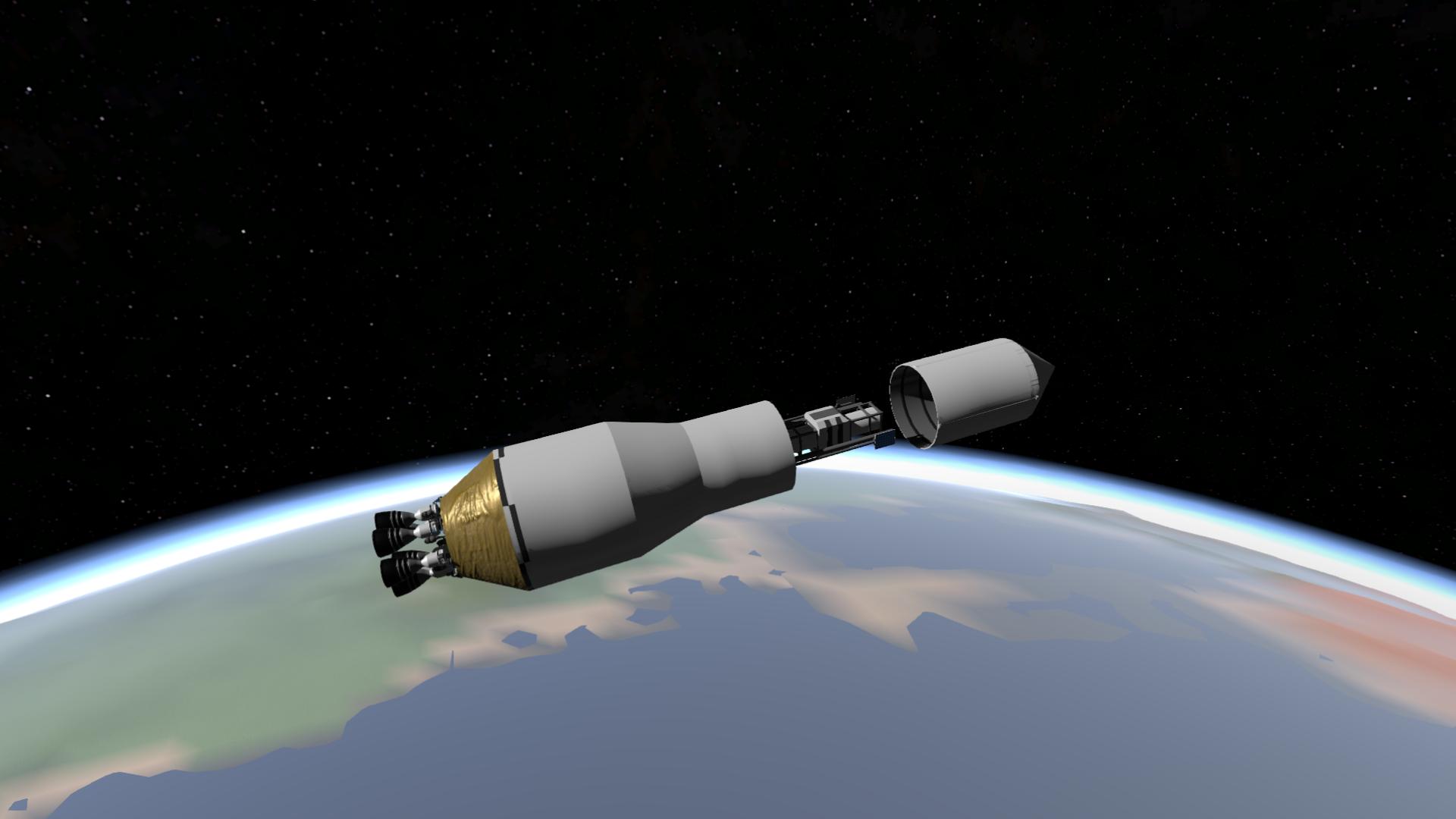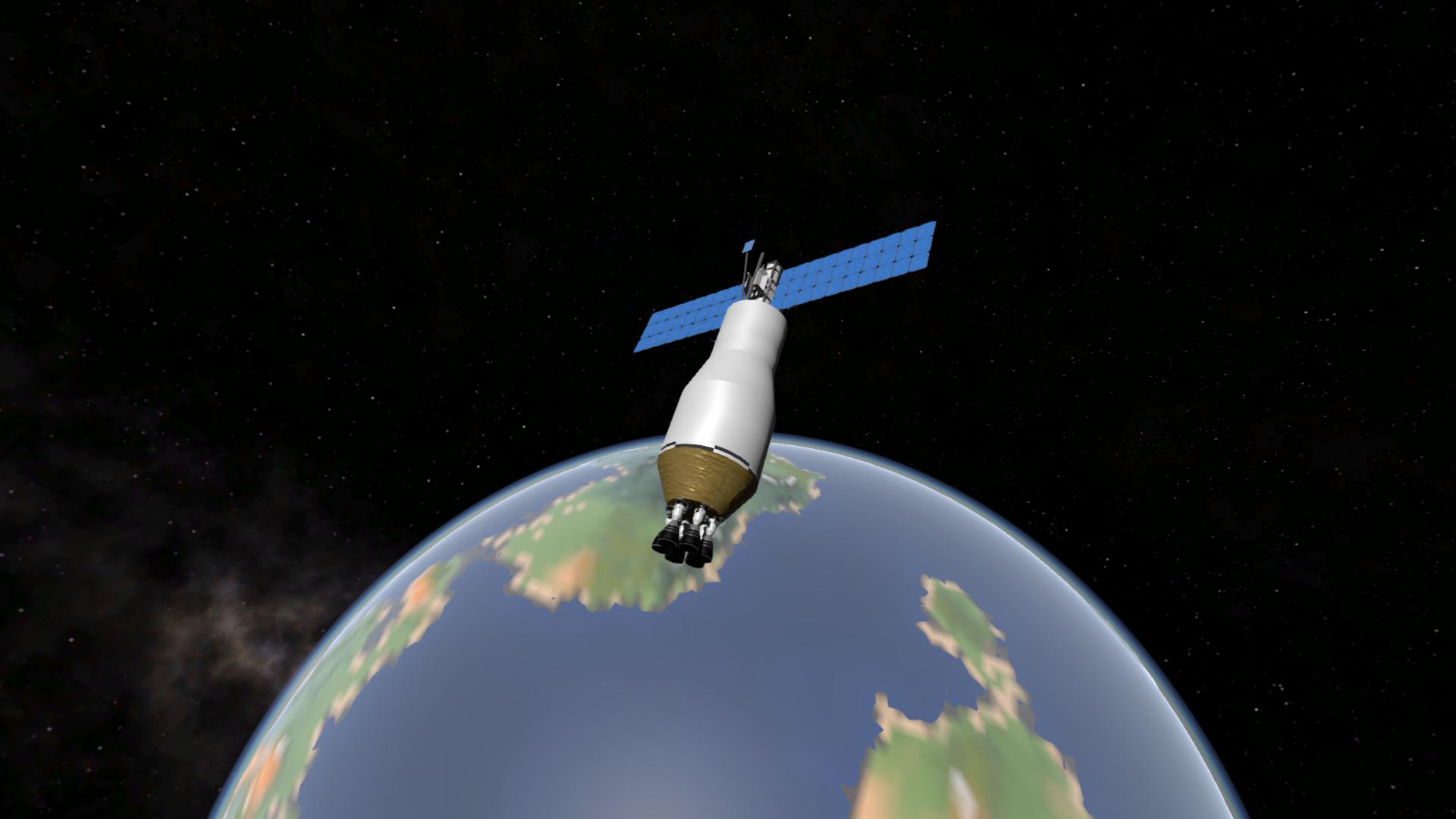This is my first upload to the simplerockets website! Yay!
The Saturn I (pronounced "Saturn one") was a rocket designed as the United States' first medium lift launch vehicle for up to 20,000-pound (9,100 kg) low Earth orbit payloads. The rocket's first stage used a cluster of propellant tanks taken from older rocket designs strapped together, leading critics to jokingly refer to it as "Cluster's Last Stand". Originally intended as a near-universal military booster for use in the 1960s, its development was taken over from the Advanced Research Projects Agency in 1958 by the newly-formed civillian NASA. Its design proved sound and flexible. It was successful in initiating the developent of liquid hydrogen-fueled rocket propulsion, launching the Pegasus satellites, and flight verification of the Apollo command and service module launch phase aerodynamics. Ten Saturn I rockets were flown before it was replaced by the heavy lift derivative Saturn IB, which used a larger, higher total impulse second stage and an improved guidance and control system. It also led the way to development of the super-heavy lift Saturn V which carried the first men to landings on the Moon in the Apollo program.
President John F. Kennedy identified the Saturn I, and the SA-5 launch in particular, as being the point where US lift capability would surpass the Soviets, after being behind since Sputnik.
The Pegasus satellite program was a series of three American satellites launched in 1965 to study the frequency of micrometeorite impacts on spacecraft. All three Pegasus satellites were launched by Saturn I rockets, and remained connected with their upper stages.
Use activation group 9 and the slider to deploy solar panels. If the ascent profile you use is too efficient, this rocket could probably reach the moon.
GENERAL INFO
- Successors 1 craft(s)
- Created On: Windows
- Game Version: 0.8.302.0
- Price: $27,216k
- Number of Parts: 134
- Dimensions: 57 m x 11 m x 11 m
PERFORMANCE
- Total Delta V: 7.2km/s
- Total Thrust: 11.2MN
- Engines: 19
- Wet Mass: 4.97E+5kg
- Dry Mass: 61,303kg
STAGES
| Stage | Engines | Delta V | Thrust | Burn | Mass |
|---|---|---|---|---|---|
| 1 | 8 | 3.7km/s | 7.9MN | 1.9m | 4.97E+5kg |
| 2 | 0 | 0m/s | 0N | 0s | 4.95E+5kg |
| 3 | 6 | 3.5km/s | 1.0MN | 2.0m | 54,456kg |










I did actually manage to to a return rendezvous with the Moon, albeit with the unfortunate inability to change lateral velocity so I wouldn’t have fallen through the atmosphere at 4km/sec. But this was incredibly well built!